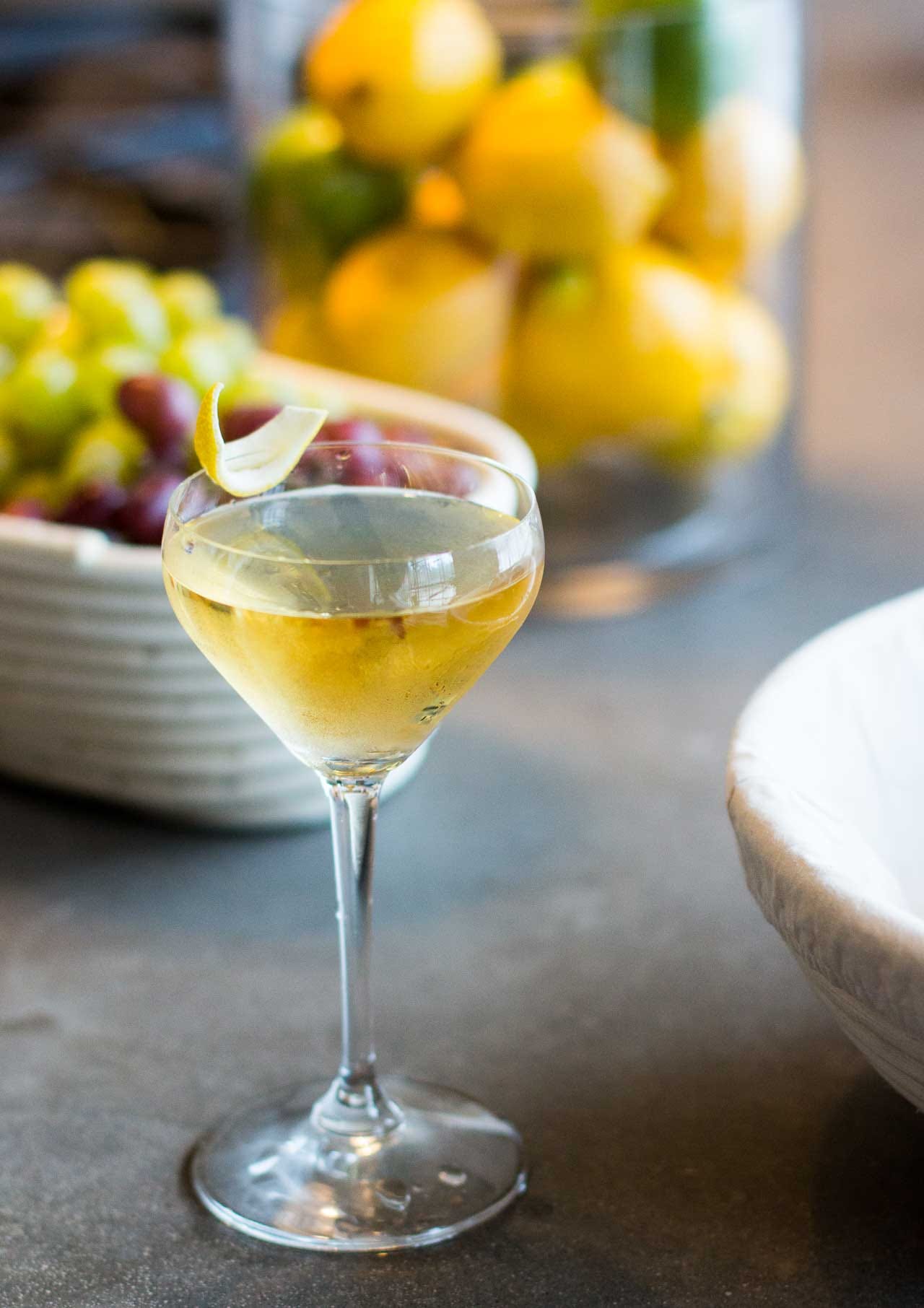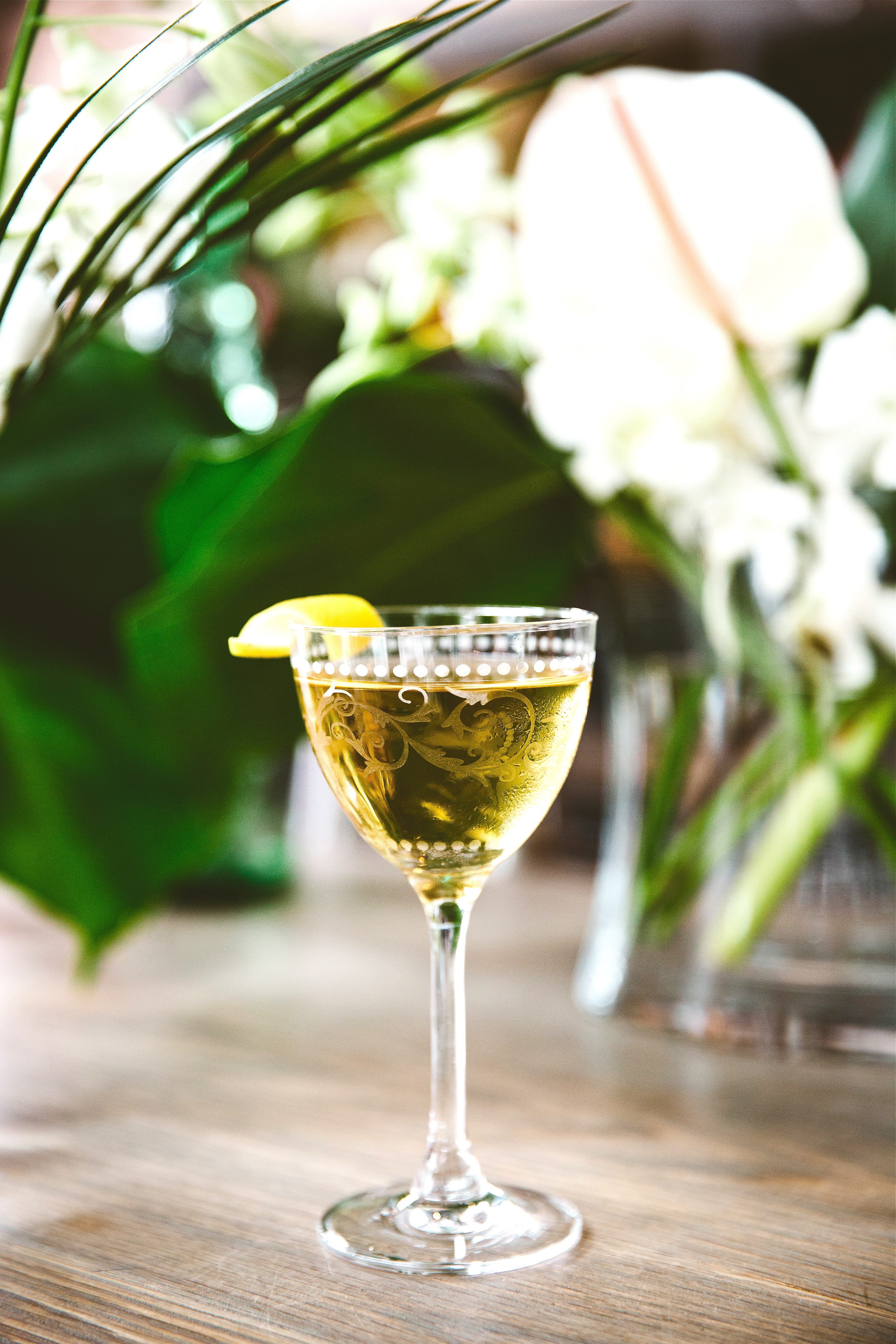The Martini gets a lot of grief when it’s not something people think it is, or think it should (or shouldn’t) be. Even though it’s just a glass with a little liquid in it, no one can quite decide how much vermouth should be in it (or if any at all), whether you can use vodka (which, for the record, is technically a Kangaroo…, if it has orange bitters in it or, and could/should it be shaken (why yes…) or if it should be stirred or shaken. Noted barman and spirits expert Jim Meehan prefers vermouth blanc, a slightly sweeter, and more well-rounded mixer than dry vermouth, although he does go on to say that it’s not a Martini. Robert Simonson chimes in quite lucidly on the subject in The Martini Book, which is filled with fifty Martinis and common variations on it. He handles what constitutes a Martini deftly in his guide, and noted that one of my favorite bartenders, Toby Cecchini at The Long Island Bar in Brooklyn, sums up the issue entirely by offering an “A Martini” (not “the” Martini) on his menu, made with junmai sake and Spanish blanco (blanc) vermouth, since are so many. Speaking from experience, it’s a great cocktail, whatever you call it. One theory goes that the Martinez, which uses sweet red vermouth and a touch of maraschino liqueur, was the base for the original Martini, until dry vermouth took over. The Martinez was one of my favorite variations on the gin/vermouth classic, but when I shot a cocktail-making video with franky marshall a few weeks back, she made me a Martinelle, which was superb. I’ve tasted a lot of cocktails in the last few years - for research, of course - and was wowed when I took my first sip of her libation. ms. franky works with Pineau de Charentes and knows the only-in-France apéritif like no one’s business. Pineau de Charentes (or PdC, as she calls it) is a blend of cognac and apple must, which is apple juice that contains the skins and seeds. The white version is aged a minimum of 18 months but I’ve had versions aged for thirty years that were smooth and silky, and make an excellent après dinner drink, especially if you want something that’s got a lower ABV than digestives like cognac, Armagnac, or calvados. She prefers the 5-year old vieux in this drink since the longer aging concentrates the flavors, but regular Pineau de Charentes plays nicely, too. When I wrote Drinking French I made sure everything in it was available in the U.S. so the drinks would be within reach of everyone in my land of Lincoln. (Amer Picon was the only outlier, but it was impossible to write a book that included French spirits without mentioning it, so I wrote a blog post about some excellent globally available alternatives.) Your local liquor store may or may not carry PdC, but if the latter is the case, a Google search can help you track some down. A few places here and there that carry it in the U.S. are Slope Cellars, Bitters and Bottles, Astor Wine & Spirits, Liquorama and K & L Wines, who has one that’s well-priced at $19.99/bottle. Our video* should be released in a few weeks, which I’ll share on my Instagram page, but I asked her if I could share the cocktail here, so you could have one right away. Thanks franky! (*While filming the video, I shared some pics on social media, and a number of people asked me about the Nick & Nora glasses, which are shown at the top of the newsletter and made by Riedel. They’re available on the Riedel website, as well as at Macy’s, Total Wine, and on Amazon.)
Martinelle CocktailAn original creation of ms. franky marshall 1 cocktail franky prefers to use a vieux Pineau de Charentes, which has been aged for at least 5 years, which she told me “…because of its age, it adds complexity, and a longer finish.” But regular white Pineau (aged 18 months) will work just fine. Pro tip: If you’re in the Charentes/cognac region of France, stop in at any tourism office in the region and they generally sell a local Pineau de Charentes that’s a staff favorite. I stock up when I’m there! Génépy is a wonderful liqueur made from a flowering plant grown in the French alps. It’s traditional to enjoy it while skiing since it’s said to be a good blood thinner, which (it’s also said) is helpful at high altitudes. If you do invest in a bottle, it’s wonderful sipped on its own, well-chilled (either with or without a bit of ice), and in my Jumpin’ Génépi cocktail. 1 ounce Pineau de Charentes blanc 1 ounce gin, preferably London dry 1/2 ounce génépy liqueur 2 dashes absinthe (or 1 dash orange bitters) small lemon peel, for garnish Add all the ingredients (except the lemon peel) to a cocktail mixing glass. Fill the mixing glass 3/4s with ice and stir briskly until well-chilled, about 15 seconds. Strain into a small, well-chilled Nick and Nora, or similar small cocktail glass. Hold the lemon peel, colored side down about 6 to 8-inches (16cm) over the glass and squeeze gently to express a bit of the lemon oils over the surface of the drink. Use the lemon peel to garnish the cocktail. Enjoy! If you got this newsletter, you’re on my free newsletter list. Thanks for subscribing! If you’d like to get all my newsletter posts and recipes you can upgrade your subscription here. - David You’re on the free list for David Lebovitz Newsletter. For the full experience, become a paying subscriber. |
Tuesday, October 12, 2021
The Martinelle cocktail
Subscribe to:
Post Comments (Atom)






No comments:
Post a Comment